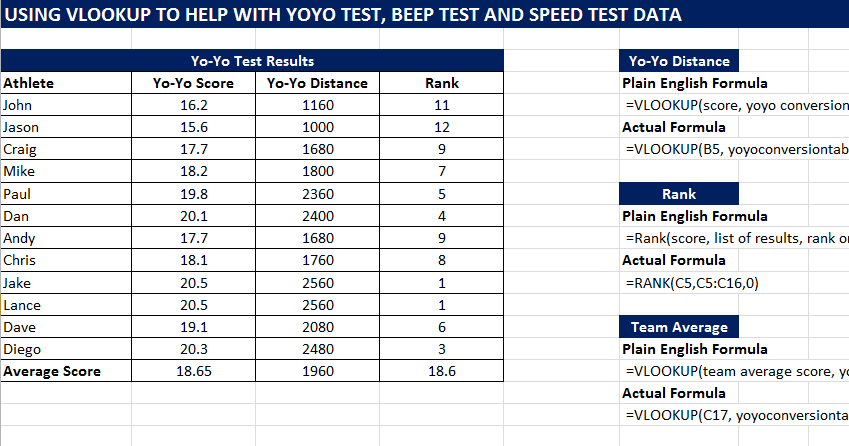Playing With Statistics [Part 2]
After a general rant in part 1 I will now try to be more pragmatic. Please note that my knowledge of statistics is basic so don’t be harsh with the comments. And if you have any good tip, suggestion or resource please be free to post. Also, please note that with these posts I am not trying to impress lab coats, but rather provide an example for my fellow coaches who deal with testing and assessment. Nothing fancy, just down to earth analysis.

For an example I will use 30-15IFT test and re-test we did during the pre-season. For more info about this test use the search function on the blog. I really like this test, but somehow I think it could improve its sensitivity by utilizing more ‘capacity’ component. What I do mean is that for example athletes improve vVO2max for certain degree, but what they also improve is the ability to maintain vVO2max pace for longer time (tlim) and I think that this is even more trainable than ‘power’ component. Check these articles: Billat and Heubert. For example if your vVO2max is 18km/h and you improve it to 19km/h with training that’s equals to 5,5% improvement, but if your tLim at 18km/h was 300sec and after that same training protocol you improve it to 500sec, that is 66% improvement. Someone correct me if I am wrong. Again, I am referring to tLim at constant speed and not % of vVO2max (because that might decrease as you improve vVO2max).
30-15IFT more than YoYo IRT test assess this ‘power’ ability (intermittent endurance), thus it is less sensitive to training changes. In YoYo test athlete accumulate distance by performing reps at certain pace (thus more ‘capacity’ measure), but in 30-15IFT they only get to repeat one 30sec interval at certain pace that increments for 0,5km/h every rep. This is why the 30-15IFT is less sensitive to training. In more statistical term, if one improves 30-15IFT from 20km/h to 21/km that is 5% improvement. On the flip side if someone improve score in YoYo test from 2,300m to 2,700m that is 17%. I don’t know how to calculate statistical significance at the moment and other fancy statistical measures, but hopefully I will know in a month or two. Till then bear with my basic statistical knowledge.
Please note that power~capacity is always involved in every test in different proportions and that the scores (both performance wise and physiological wise, like bLA) are always task dependent. Also, improving one aspect of performance might not mean that the performance itself improved. Think about it. And check this article by Steve Magness.
I have some ideas how to modify this test, or maybe supplement it with MAS test or even intermittent endurance test that demands repetition of certain pace until exhaustion (e.g. repeating 30sec @20km/h with 15sec rest until exhaustion), but that would be a whole another article.
This is getting long. I will cut here and actually come back with test and re-test scores in the next post.











Responses